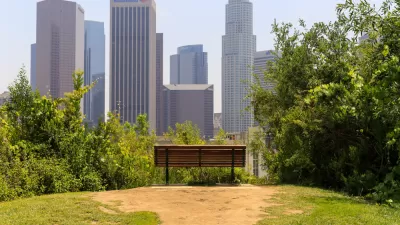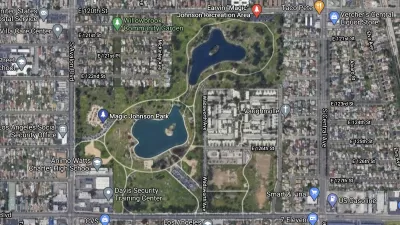A recent Los Angeles Times article described the creative ways the city of Los Angeles is trying to meet park needs. Los Angeles County park planner Clement Lau describes the county's side of the story.
(*Updated September 10, 2014) While a recent Los Angeles Times article looked at how the city of Los Angeles is trying to come up with out-of-the-box ways to meet its park needs, the county also is facing the same dilemma.
Los Angeles County also has limited space for parks, but the Department of Parks and Recreation (DPR) is making several efforts to increase available facilities for residents, according to county planner Clement Lau.
“Like its counterpart at the City of Los Angeles, DPR recognizes that it must be creative and bold in how it meets the park and recreation needs of underserved communities given budget, land, and other constraints. Just as no single agency can do it all, no single solution will be adequate or sufficient. Thus DPR has also been identifying, evaluating, and pursuing opportunities to create new parks and trails at unconventional locations such as utility corridors and small vacant parcels, and coordinating with partners such as utility providers, private property owners, school districts, transportation agencies, and local non-profit organizations.”
The county’s push includes drafting park plans for six unincorporated urban communities and *an action by the County Board of Supervisors to include Proposition P on the November ballot. Proposition P would continue funding for parks and other recreation facilities by establishing a $23 per year parcel tax.
“If approved, the tax would be levied for 30 years, generating an approximate total of $1.6 billion, including nearly $45 million to unincorporated areas of the County and almost $163 million to underserved communities for parks and recreational amenities.”
*This post was updated to more accurately describe the actions of the County Board of Supervisors with regard to Proposition P. The earlier use of the term "lobbying" is not an accurate description of their action to place the item on the November ballot.
FULL STORY: Unincorporated Areas Need More Parks Too

Study: Maui’s Plan to Convert Vacation Rentals to Long-Term Housing Could Cause Nearly $1 Billion Economic Loss
The plan would reduce visitor accommodation by 25,% resulting in 1,900 jobs lost.

North Texas Transit Leaders Tout Benefits of TOD for Growing Region
At a summit focused on transit-oriented development, policymakers discussed how North Texas’ expanded light rail system can serve as a tool for economic growth.

Using Old Oil and Gas Wells for Green Energy Storage
Penn State researchers have found that repurposing abandoned oil and gas wells for geothermal-assisted compressed-air energy storage can boost efficiency, reduce environmental risks, and support clean energy and job transitions.

Opinion: DC Encampment Sweeps Hide, but Don’t Solve, Homelessness
President Trump recently ordered the clearing of encampments built by unhoused people on federal land in Washington, D.C.

Santa Barbara Could Build Housing on County Land
County supervisors moved forward a proposal to build workforce housing on two county-owned parcels.

San Mateo Formally Opposes Freeway Project
The city council will send a letter to Caltrans urging the agency to reconsider a plan to expand the 101 through the city of San Mateo.
Urban Design for Planners 1: Software Tools
This six-course series explores essential urban design concepts using open source software and equips planners with the tools they need to participate fully in the urban design process.
Planning for Universal Design
Learn the tools for implementing Universal Design in planning regulations.
Ascent Environmental
Borough of Carlisle
Institute for Housing and Urban Development Studies (IHS)
City of Grandview
Harvard GSD Executive Education
Toledo-Lucas County Plan Commissions
Salt Lake City
NYU Wagner Graduate School of Public Service





























